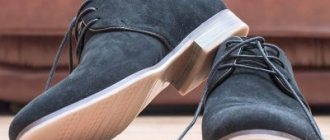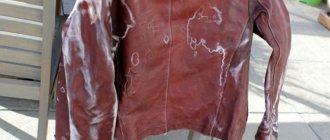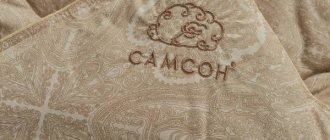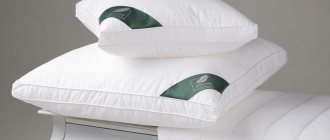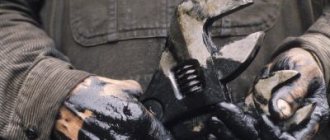A curtain is an important bathroom accessory that prevents water from splashing when taking water procedures and serves as a decoration for the room.
Constantly being in a humid environment, curtains also require washing and removing stains from mold, lime and rust. This treatment will help maintain the hygiene of the room and refresh the material.
Is it possible and how to wash a bath curtain (made of polyester and other materials) in a washing machine and by hand to get rid of mold, yellowness and limescale, read the article.
Are there any restrictions for washing curtains?
Improper washing of bathroom curtains can lead to damage and loss of presentable appearance.
The cleaning method directly depends on the material the curtain is made of.
The most common include:
- polyvinyl chloride;
- polyester;
- polyethylene.
PVC and polyester
Vinyl and polyester for the most part are able to survive washing and maintain their appearance and performance . Restrictions on cleaning may be given by the manufacturer of a particular product, so you should read the label on the product before washing.
The manufacturer may prohibit machine washing, as well as the use of bleaches. In this case, it is better not to experiment and treat the curtains with your hands with an approved detergent.
If there are no strict restrictions, then automatic washing in a washing machine will be the best option. The exception is the need to remove stains characteristic of the bathroom: from rust, mold or limescale. Household chemicals and homemade recipes are used for these purposes.
Polyethylene
Among all the types of materials that are traditionally used to organize curtains in the bathroom, polyethylene is the cheapest and most fragile.
It is capable of good protection against splashing, but has a very short service life - up to six months.
Such material will not survive thorough washing . Maximum cleaning is a careful treatment with a non-aggressive agent. For example, Pemolux.
Cleaning is carried out with a soft sponge, without using brushes, which can damage the thin material. In case of serious contamination, the plastic curtain is simply replaced with a new one.
Cleaning methods
There are two ways to wash a curtain, using an automatic machine or manually. The washing method must be chosen depending on the material of the bathroom curtain. Many manufacturers offer stylish models made of vinyl, polyester or polyethylene.
Their vinyl and polyester options are hand or machine washable. Various powders and bleaches can be used.
The ideal choice is curtains that can be machine washed using chlorine bleach. This will allow you to easily remove any kind of stains.
Polyethylene curtains are characterized by a simple appearance, affordable price and short service life. Such a curtain can last a year and a half with proper and regular care.
If the curtain cannot be washed, then it must be cleaned and washed using universal products, and then dried thoroughly. If machine washing is prohibited, you can wash the product by hand.
Handwash
Hand washing is an excellent way to remove yellowness or limescale from a bathroom curtain.
It is important that the curtain is not made of fabric. If it is made of vinyl, polyester or polyethylene, then washing should be done as follows:
- You should take a basin of the required size, fill it with warm water and add 1 teaspoon of soda and half as much citric acid per three liters of water.
- The curtain must be soaked in the resulting solution and left for 60 minutes.
- After soaking, polyester curtains must be wrinkled with your hands, since this action will better remove even stubborn stains.
- Next, you need to pour clean water and thoroughly rinse the curtain in it.
Experts recommend adding a little white to the soaking water to clean the curtains from yellow plaque or mold. A small amount of bleach will not spoil the fabric of the curtain, and will also help deal with fungal spores.
Machine washable
Washing in an automatic machine is very convenient and high quality. With its help, the product can be restored to its original appearance.
It is important to select only the delicate washing cycle, as well as turn off spinning and drying, as these actions can damage the curtain
To give polyester or vinyl curtains an attractive appearance, it is enough to machine wash them just once a month. Before washing in an automatic washing machine, a heavily soiled curtain must first be soaked in water with the addition of bleach.
Pour up to 5 liters of warm water into a basin and add two caps of bleach. The product should be soaked for about two or three hours.
If the curtain cannot be washed with chlorine-containing substances, then you can use a little bleach intended for children's clothing. This bleach is used for soaking and is added during washing. To make machine washing more efficient, experts recommend loading a few more towels into the machine along with the curtain.
After washing, the bathroom curtain should be soaked for 30 minutes in slightly salted water.
Manually
For curtains that require delicate handling, hand wash only.
With this method, the curtain is soaked in advance in a suitable detergent solution. This could be laundry soap, powder or bleach. The choice is limited only by the manufacturer's recommendations.
To clean the curtain you will need:
pelvis;- brush;
- water;
- detergent.
Washing procedure:
- Pour warm water into the basin (temperature no more than +40°C).
- Dilute the powder (or other detergent) according to the instructions on the package.
- Dip the curtain into the prepared solution.
- Using a brush, it is necessary to treat contaminated areas and seams of the product. You need to go over both sides of the curtain with a brush.
- For heavily soiled curtains, you can supplement cleaning with baking soda. Take ½ cup of it and dilute it with water to a paste. This mixture can be used to treat heavily soiled areas.
- After washing, the curtain is rinsed in water.
- The curtain is shaken and hung in place, lowering the bottom edge into the bath.
For stains from rust, mold or lime, it is recommended to treat them first, and only then wash the entire product.
How to wash a bathroom curtain by hand, video instructions:
Rules for caring for a bath curtain
In order for bath curtains to serve faithfully for more than one month or even a year, you should follow simple rules that will allow them to maintain their shape and color for a long time.
- Every time after taking a shower, it is advisable to wipe the curtain from top to bottom with a dry cloth.
- After bathing, leave the bathroom door open to prevent steam from settling on surfaces.
- If you don't have the time or desire to dry the linen every time, you can simply shake off the droplets into the bath.
- Before washing a bathroom curtain in a machine, remove the weights from it (for fabric curtains). And if they are not removable, wash the material by hand, being careful not to wet the bottom of the product.
- When cleaning stains, do not use hard brushes - they can damage the material and even tear the polyethylene.
Is it possible to put it in the washing machine?
Washing curtains in a washing machine is the easiest way to freshen the material. If curtains are used regularly, such treatment should be carried out once every 60-90 days.
Procedure:
Remove the curtain.- If it has removable fasteners or removable decor, they must be removed.
- Place the product in the drum.
- Select the “Delicate” mode.
- Make sure that the temperature is no more than 40°C.
- Disable the “Drying” and “Spin” modes.
- Start the machine.
- Remove the wet curtain from the drum and hang it in place, allowing the water to drain into the bathroom.
Adding two terry towels to the load with a curtain will help enhance the effect of washing. Their rough surface will help clean the curtain better.
This treatment is suitable for curtains that are not heavily soiled. Otherwise, it is advisable to start washing by pre-soaking and treating stains.
The detergent for this procedure should be selected following the recommendations of the curtain manufacturer. If they do not specify strict restrictions, then it is possible to use bleach or other products with chlorine.
With strict restrictions, oxygen-containing bleach without chlorine will help. For example, Vanish. Soaking should be carried out in accordance with the instructions for the specific detergent, and do not use hot water.
Cleaning methods
How to clean curtains depends on the type of material of the protective and decorative element and the nature of the stains.
Automatic in the washing machine
Products made from textiles, vinyl, a combination of cotton and polyvinyl chloride can be machine washed. Textile bath curtains are made from 100% cotton with water-repellent impregnation and weighting to retain their shape. They can only be properly cleaned by washing. Place the product in the apparatus without devices for holding it on the rod. The water temperature must correspond to the manufacturer’s instructions (usually no higher than 60 degrees).
To protect the curtains from mechanical stress, you must:
- set delicate mode;
- turn off spin;
- drying
Vinyl, textile-polyvinyl chloride curtains are washed in the same way with a terry towel, for better contact with the detergent. If the rings are not supposed to be removed, then the products are washed in a pillowcase to avoid damage to the drum.
Washing powder for automatic machines is used as a detergent. If there are rust stains or lime deposits on the surface of curtains for textiles, add a little Domestos, for others - soda.
Handwash
Products made from polyethylene are cleaned manually. The manual method is acceptable for products made of polyester and vinyl. If there is slight contamination from soap stains, the curtains are not removed from the rod; they are treated with a sponge.
Cleaning sequence:
- straighten the inside of the curtain over the bathtub;
- moisten with warm water from the shower;
- holding it from the outside with your palm, wipe the surface with a soapy sponge;
- rinse with a stream of clean water from the shower;
- move to the next curtain segment.
If the curtains are heavily soiled, wash them by first soaking them in a container of warm water. The choice of cleaning agent depends on the nature of the contamination: black spots from fungus, mold, soap, and lime stains. After 20-40 minutes, wipe the decorative element of the bathroom with a soapy sponge, removing any existing stains.
Rinsing should be done in a bath with a sufficient amount of warm water. To create a protective film on the curtain against fungi and mold, you can dip the curtain in a bowl of cold salted water for a few minutes.
Partial
Once a week, the curtains are cleaned of dirt without removing or completely wetting them. Only contaminated areas are treated. This method of care allows you to prevent loss of the decorative surface and extend the service life of the product.
How to clean without removing?
In order for the curtain in the bathroom to retain its presentable appearance longer and serve for a long time, it must not only be washed periodically, but also regularly looked after between washes.
For this processing you will need:
- spray bottle;
- sponge;
- detergent dissolved in water.
For processing, it is advisable to use a detergent in gel form.
Procedure:
- Dilute detergent in water.
- Pour it into a spray bottle.
- Spray the cleaner over the surface of the curtain.
- Wipe the material with a sponge.
- Wash off the detergent composition using a sponge or rag.
Such treatment, without removing the curtain, will not replace a full wash, but will help maintain the hygiene of the curtain. And it will not allow the formation of difficult-to-remove contaminants.
Causes of pollution
The purpose of the curtains is to protect the flooring, walls, and plumbing fixtures in the bathroom from water during ablution. The reasons for the appearance of dirt on curtains are related to water and room ventilation.
Yellowness
Yellow stains on curtains appear if the detergent is not washed off from the inside after taking a bath or shower.
White stains
When taking a shower, droplets of water fall on the curtains. Clean but hard water, when dried, forms a limescale deposit on all types of surfaces.
Rust
The presence of rust in tap water is noticeable by brown dried drops and streaks on the curtains.
Mold
Insufficient ventilation of the room prevents the curtains from drying, which leads to the formation of mold and mildew.
Features of treatment against mold and mildew
A damp bathroom environment and warmth are optimal conditions for mold to grow. Regular washing will not be enough to completely eliminate pathogenic organisms. Proven recipes will come to the rescue.
Citric acid and soda
In order to eliminate mold, a combination of mechanical and chemical treatment is needed. For cleaning you will need:
- citric acid (1 package of 50 grams);
- brush;
- soda (1/2 cup).
Progress:
Remove the curtain and place it on the bottom of a large basin.- Dilute baking soda with water to obtain a creamy texture.
- Rinse the curtain with water. You can use a shower head for this.
- Scrub mold stains with a brush and soda slurry.
- Plug the drain in the bathroom and fill with approximately 10 liters of water at a temperature of +35°C to +40°C.
- Dilute citric acid in water.
- Rinse the curtain thoroughly in the prepared solution.
- Hang the curtain in its designated place.
Vinegar and baking soda or bleach
Exposure to baking soda (or oxygen-containing bleach) and an aqueous solution of vinegar will help deal with mold.
Operating procedure:
- The cleaning paste is prepared in advance. For it, use ½ cup of soda or bleach and a little water so that the consistency is like gruel.
- The curtain is removed and moistened with water.
- Transfer to a basin.
- Using a sponge and baking soda, scrub off all stains.
- Pour a large bucket of water into a basin, add 1 cup of vinegar and add ½ cup of soda.
- The curtain is immersed in a basin.
- Leave for 1 hour.
- Rinse the curtain.
- They take it out.
- Without squeezing, hang it over the bathtub.
Domestos
The use of Domestos is one of the effective means in the fight against mold.
Procedure:
Apply a few drops of Domestos to a damp sponge;- distribute the product over the entire surface, paying special attention to areas blackened by mold;
- leave the curtain in the basin for a quarter of an hour;
- wash by hand;
- rinse in water;
- hang it so that excess moisture drains into the bath.
Tools used
To clean the curtain in the bathroom, housewives use specialized household chemicals.
The most popular means are:
- Domestos.
- "Vanish."
- "White".
- "Sanita."
- ACE.
The choice of cleaning agent depends on the material of the product.
“Domestos” is a universal series of special products for cleaning, disinfecting and washing many products, except polyethylene, upholstery and colored fabrics. The product is made in the form of a gel, the main component of which is chlorine (up to 70%) - the most effective bleach. To clean stains on curtains in the bathroom, just dissolve 1 cap of gel in 5 liters of water heated to +40°C and soak for 3-4 hours.
“Vanish” is a stain remover with oxygen-free chlorine-free bleach that cleans rust and soap stains on any fabric. Powder or gel quickly breaks down and removes surface contaminants at any water temperature. To remove a stain on a curtain, make a solution: 1 cap of gel per 5 liters of warm water, soak for 2 hours.
“Belizna” is a common inexpensive product that contains up to 95% active chlorine. With the right dosage, it can remove any stains on curtains. Best suited for washing white or light-colored items. To remove a stain on thick fabric, a substance is applied to it, left for no more than 1 minute, washed off and washed.
Cream or liquid "Sanita" from the categories "Anti-grease" and "Anti-rust" contain oxalic acid and disintegrators that can quickly remove limescale stains and rusty streaks from the material. A few drops are poured onto the contaminated area, wiped and washed off.
An excellent solution for removing dirt from fabric is ACE liquid with chlorine. It is recommended to apply bleach directly to the stain, leave for 3-5 minutes and rinse. If the area of contamination is large, add 10 ml of ACE to 10 liters of water, soak the curtains for 2 hours and wash by hand or in a washing machine at a temperature not exceeding +40°C.
Methods for removing limescale
Frequent contact of curtain material with hard water can lead to limescale stains. This formation spoils the appearance and reduces the service life of the curtain.
Lemon acid
For processing you will need:
- citric acid (1 small bag);
- water;
- pelvis;
- brush.
Progress:
- Pour 2 liters of water into a basin.
- Dissolve citric acid in water.
- Soak stained areas for 60 minutes.
- Brush over lime stains.
- Rinse the product.
In order to eliminate lime stains, it is not necessary to treat the entire surface with the selected product. It is quite enough to clean only the stains, and then simply wash the product in the usual way.
Vinegar
Yellow deposits on the material can be removed with table vinegar. For processing you will need:
- pelvis;
- vinegar;
- tablespoon;
- water;
- brush.
Processing includes the following steps:
- Pour water (2 liters) into a basin.
- Measure vinegar (3 tablespoons) into water.
- Soak areas affected by lime deposits (or the entire curtain) in a basin.
- Leave for 60 minutes.
- Scrub stains with a brush.
- Rinse.
- Hang.
Vanish
Traces of water drops that have dried on the curtain are not aesthetically pleasing and require timely removal. In addition to homemade recipes, household chemicals designed to remove difficult stains will come to the rescue. Examples of such drugs are Vanish and Ace.
The selected product is used according to the instructions indicated on the package. Rub stains with a sponge. After treatment, rinse and wash in the usual way, adding Vanish to the detergent.
If the problem returns
If, despite all the measures taken to clean the sealant from mold, this could not be done, the fungus has probably penetrated into the deeper layers of the composition. To eliminate it, you will need to remove at least the top layer of waterproofing and apply a new one with an antifungal effect.
Before applying a new sealant, the surface must be treated:
- clear away debris;
- disinfect, for example, with isopropyl alcohol.
All stages of preparing and applying waterproofing must be performed very carefully. After treatment with alcohol, you need to wait 30 minutes to consolidate the effect.
Waterproofing should only be applied to a completely dry surface. After filling the seam with sealant, it is necessary to wait the required time, preventing moisture from entering its surface.
Before using the sealant, you must study the instructions for it, since different manufacturers may have their own application features.
Removing rust and yellowness
Traces of rust can form from contact of the curtain with wet metal. Regular washing may not remove them, so it is recommended to use homemade recipes for treating this type of stain .
Hydrogen peroxide and ammonia
To treat rust stains on the material, you can use a simple recipe using drugs from your home medicine cabinet.
For cleaning you will need:
- hydrogen peroxide (50 ml);
- ammonia (150 ml):
- sponge;
- water.
Curtain processing procedure:
- Combine ammonia and peroxide in a bowl.
- Dipping the sponge into the solution, treat all stains with the liquid.
- Rinse.
- Wash as usual.
Household chemicals
You can deal with rust using household chemicals:
- "Adrilan";
- "Sanita" and others.
Processing order:
- Apply a small amount of the selected product to the sponge.
- Rub stains with a sponge.
- Leave for 5 minutes.
- Rub the stained areas again with a sponge.
- Rinse off with plenty of water.
- Wash.
What to consider?
When choosing how to care for your bathroom curtain, pay attention to the material from which the curtain is made. Among the most common options are several:
Among the most common options, there are several.
- Polyvinyl acetate, polyvinyl chloride. Products made from vinyl and polyester are easy to clean, they are strong and durable. To care for such materials, it is recommended to use bleaches and powders.
- Fabrics with impregnation that repels liquid. Such curtains are practical and comfortable. You can easily wash water off the curtain (thanks to the impregnation). There will be no marks on her after this. It is recommended to wash such materials weekly.
- Polyethylene curtains. They are short-lived and cheap. In the absence of the necessary care, they have to be changed monthly. Cleaning can be done using baking soda or special products. If such a curtain is carefully looked after, it can last about six months (it is recommended to clean the polyethylene rather than wash it).
- Glass products. To care for such surfaces, ordinary household chemicals for cleaning glass are quite suitable. Glassware can also be cleaned with a steam cleaner.
It is better to clean the curtain, focusing on the rules indicated on the label. Usually there is all the necessary information: is it possible to use household chemicals with chlorine, at what temperature to wash, is it possible to wash a bathroom curtain at all.
Drying
The shower curtain is designed for constant contact with water. This does not harm the material. Proper drying includes observing the following rules:
prohibition on twisting and squeezing;- The best way to avoid wrinkles is to immediately hang the item vertically after washing to allow the water to drain;
- if possible, after washing it is recommended to hang the curtain in a permanent place above the bathtub;
- You should not try to speed up drying using heating devices, much less an open fire;
- You should not hang a wet curtain in a place where it will be exposed to direct sunlight.
Partial washout
If, in general, the curtain is quite clean, and only the bottom of the product is contaminated, you can not wash the curtain completely, but clean only the contaminated area:
- A solution of vinegar or lemon juice will help to clean the curtain from yellow or white limescale deposits. Apply the composition to
- Acidic compounds work well against traces of rust. As in the previous case, the solution must be applied to the surface of the curtain and not washed off for 5-7 minutes. The acid will dissolve the rust and it can be easily removed with a damp sponge. In addition to vinegar and lemon juice, you can use citric acid. You can sprinkle it on the edge of the curtain or dilute the crystals with water and treat the rusty areas with the resulting solution.
- sponge and wipe the dirty area of the curtain. Leave on without rinsing for a few minutes. Then wipe the curtain again with a sponge and rinse with warm water from the shower.
Varieties
The modern market offers a decent range of curtains. Models differ in material, color, mounting methods, etc.
By the way, the type of fastening is a very important point for choosing the right curtain. This can be a regular rod (the most common option), eyelets, magnets, chains and others.
For long-term operation of this accessory, it is important to choose the right material from which the curtain will be made and the type of its fastening. The choice of material is also very important both for the operation of the accessory and for its care.
Available today:
The choice of material is also very important both for the operation of the accessory and for its care. Available today:


